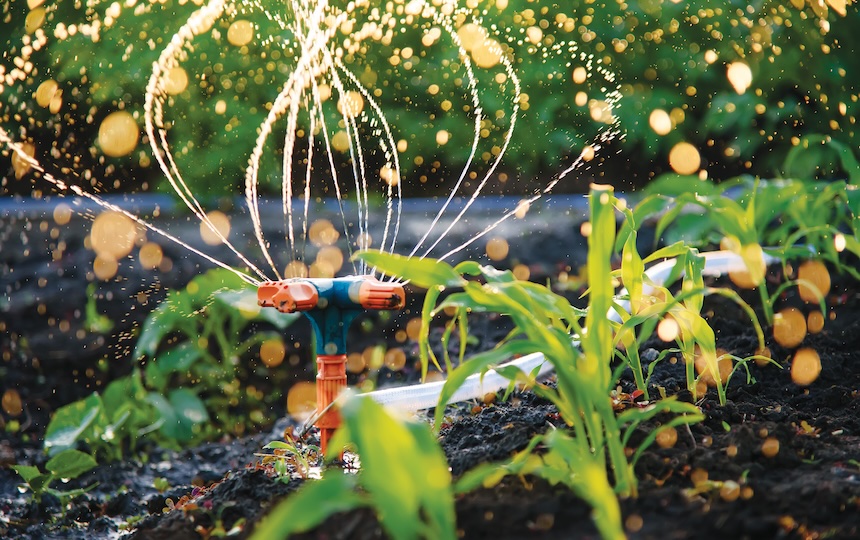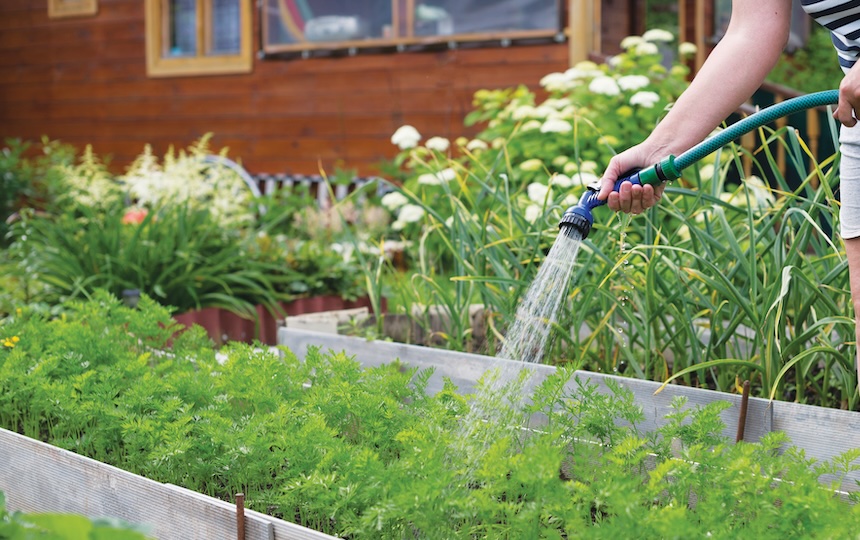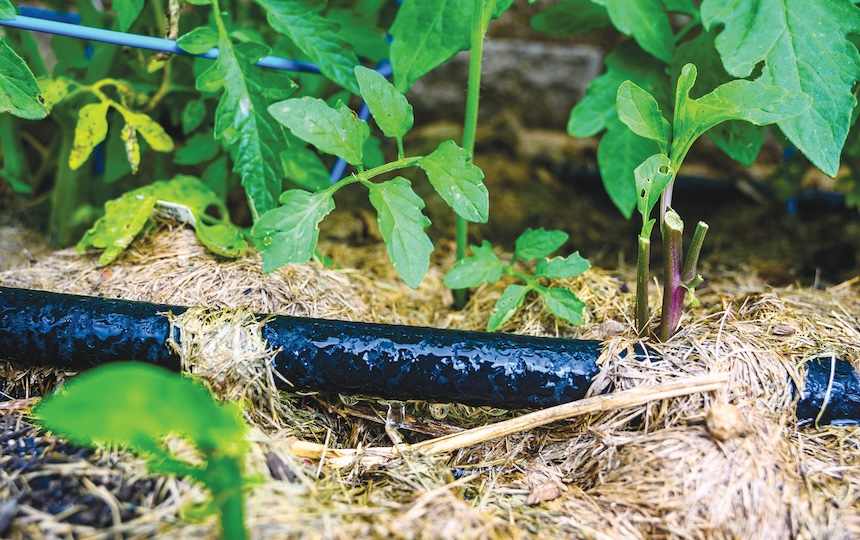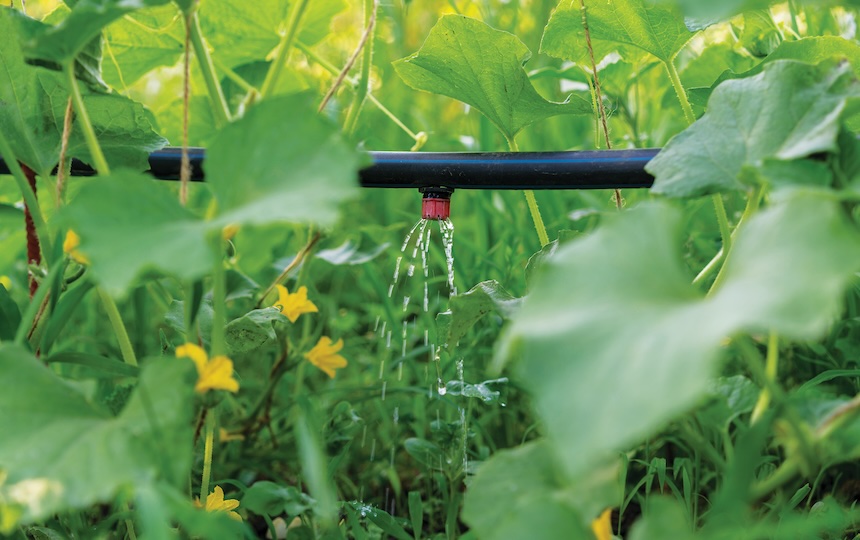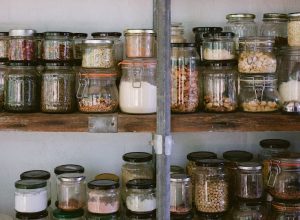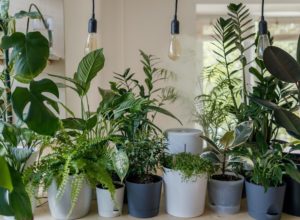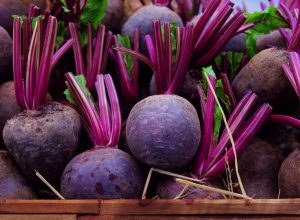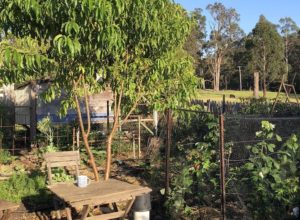Should you hand-water, install an irrigation system or plug in a sprinkler? We consider the best watering methods to keep your plants happy and hydrated.
Without water, plants would not survive. It makes up the majority of their cells and carries essential nutrients around the plant. Water is both used and produced during photosynthesis, a chemical process occurring in the plant’s cells to convert energy from the sun and carbon dioxide from the air into oxygen and energy the plant uses to grow.
Water also helps plants regulate their temperature by being transpired, or evaporated, from tiny pores in their leaves. Plant cells plump with water are also more flexible and able to better withstand wind and heat – cells that dry out will show up on the plant as brown patches or tips on leaves and stems.
4 Watering Methods for Your Garden
Hand-watering
For many gardeners, watering the garden can be a pocket of peace or some much-needed observation time. A
good quality hose and fittings, along with a spray nozzle or watering wand are all that’s needed, or even just a watering can will suffice if your garden is small.
While hand-watering is simple, pay attention to make sure it’s landing where it needs to. Rather than spraying the water at the leaves of the plants, direct it towards their base and the soil. By avoiding wetting the leaves too much, you’ll reduce the chance of fungal diseases like mildew taking hold on susceptible plants and maximise water soaking into the root zone.
Sprinklers
Sprinklers are a simple way to cover more ground and spray pressure can be increased or decreased by the
turn of the tap. There are many types of sprinkler heads available, from round button or fountain heads to rotating sprays or ‘wobble-tees’. They can be moved around, placed on the ground or mounted on stands. While they are an effective way to water lawns and under trees and shrubs, overhead watering is less efficient in windy weather or heavily mulched gardens. In very hot weather, they can
be an effective way to cool the air via evaporation and can be used in conjunction with other watering methods. Not always the most water-wise option, however, as sprinklers are non-selective in terms of where the water will end up, meaning you might end up watering your paths as well.
Soaker hoses
A low-cost and effective way of watering your garden, soaker hoses simply plug into a tap fitting. There are a couple of types; a lightweight perforated flat plastic hose that water sprays from, and a porous rubber tube that weeps water along its length.
Easy to move around, a spray soaker hose is best used under plants that aren’t susceptible to fungal issues. Being plastic, it may break down, so purchase a higher-quality UV- stable hose if you can afford to.
Drip-line irrigation
Drip line is a great option for permanent gardens, as it is more expensive to set up and will last for many years. It consists of plastic tubing with low-flow holes (called inline emitters) spaced evenly along its length that drip water at a slow and consistent rate.
Drip line is very efficient, sitting directly on the soil with the water emitted only from the dripper points in a precise watering pattern to minimise run-off and evaporation. There are various emitter spacing and flow rates available.
Want to know more about three watering methods for your garden?
In Issue #31 of Pip, we bring you a comprehensive guide to keeping your garden hydrated, including:
- How to achieve the right level of hydration.
- How to time your watering effectively.
- And whether it’s better to apply small amounts of water more frequently, or deeply soaking plants less often.
You can access this article online here as part of our digital subscription offering, or subscribe to the print version of Pip Magazine here.

